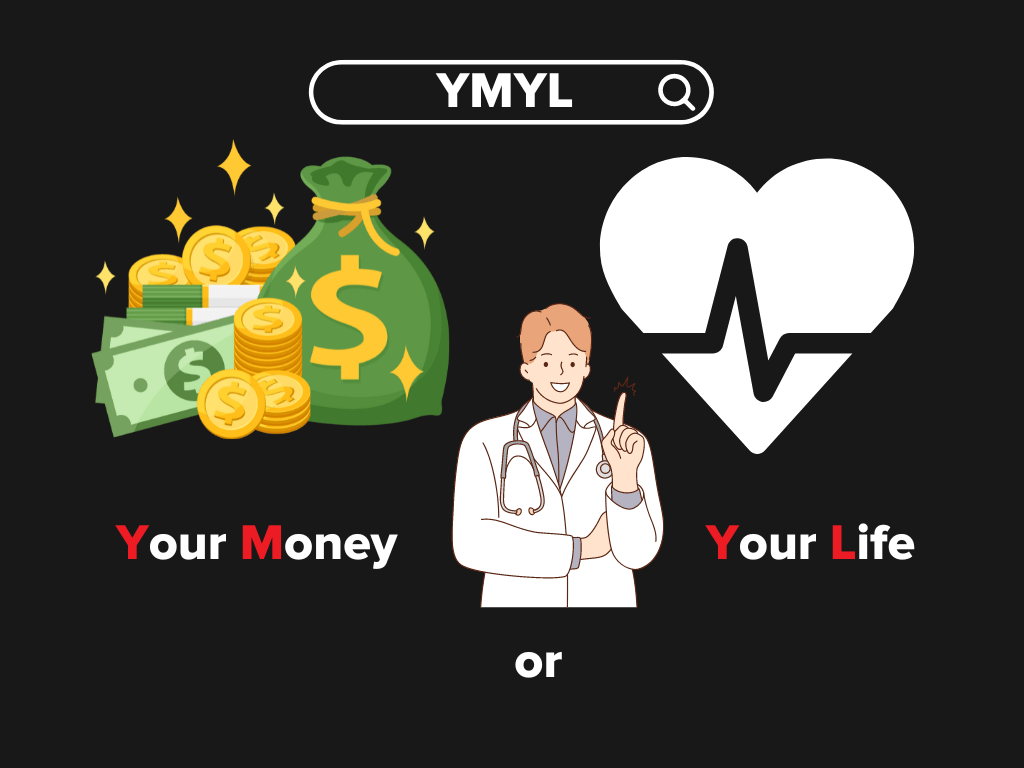For many years now, consistent blogging has been an integral part of all SEO strategies. No matter your niche or industry, if you were trying to reach the top of the SERPs, relevant blog posts containing target keywords were how to get there.
Yet, the online landscape has changed significantly in recent years.
The introduction of social media platforms like Twitter & Tik Tok has revolutionized how people search for information online, not to mention the advent of intelligent AI chatbots like ChatGPT.
These technological advances have caused some to declare that blogging for SEO is no longer relevant (some even go as far as saying that SEO is dead).
But are these allegations true? Will producing blog content no longer yield more organic traffic, leads, and conversions?
It only takes a little bit of research to discover that, yes, blogging for SEO is still alive & relevant in 2023.
In a recent poll by Orbit Media, 80% of surveyed marketers reported that their blogs still deliver strong results. There are more than 600 million blogs online out of 1.9 billion websites, which means blog pages comprise a significant majority of the internet.
WordPress powers most blogs, featuring 409 million readers that generate 20 billion page views per month.
These stats prove that blogging for search engine optimization is still alive and well, so stick around to learn how to leverage blogging for your business.
Do People Still Read Blog Posts?
With everyone glued to their phones on Tik Tok and YouTube these days, it may seem as if nobody reads blogs anymore.
After all, why read a blog post when you can just watch a quick video?
The main reason why blogs aren’t obsolete is the continued prevalence of Google search & other search engines.
Search engines are still the #1 way to find information online, and a majority of search queries lead to blog posts. In fact, there are roughly 5.6 billion searches on Google each day, with 94% of them landing on organic search results.
What comprises a majority of the organic search results?
You guessed it, blog posts. There are blogs that answer questions, review products, teach new skills, and so much more.
For example, say you want to find the best Italian restaurant in your neighborhood. You do a quick Google search and land on a blog post listing the top 10 Italian restaurants in your town. Just like that, you sought out and consumed a blog post – even though you probably don’t consider yourself an avid blog post reader.
Most people assume they don’t read blogs because they’re picturing travel blogs and opinion pieces.
In actuality, it’s highly likely that you regularly consume blogs. Any time that you’ve searched for information online and clicked on a result, it was most likely a blog post.
As long as people continue to use search engines to find information online, blogging will still be a viable & profitable practice, especially for SEO strategies.
Does Blogging Have a Future?
While blogging is still alive & kicking right now, will it continue to stay that way down the line?
After all, it would be a shame to dump a ton of time and resources into creating an in-depth blog only for it to become obsolete in a few short months or years.
The good news is there’s no sign that blogging’s effectiveness will go away anytime soon.
As stated previously, as long as people need to find information online, blogging will remain alive & well.
Yet, that doesn’t mean that the same techniques & types of blog posts will always work.
For instance, blogging in 2023 looks very different than it did five or 10 years ago.
In the past, businesses could get away with spamming tons of subpar blog posts filled with keywords to get to the top of the SERPs. Little by little, Google has made updates to its algorithm to only rank trusted, high-quality websites at the top of its search results.
In fact, there are over 200 factors that Google considers when ranking websites. These ranking factors include everything from the quality of content to trustworthiness and more.
As of 2023, Google (and other search engines) value high-quality content that exhibits first-hand experience, expertise, authoritativeness, and high levels of trust.
This is represented by the E-E-A-T acronym announced in Google’s update that occurred in late 2022.
As long as you get your bloggers to produce content that adheres to the E-E-A-T acronym, there’s no reason why you can’t find success with blogging for SEO well into the future.
Does Blogging Still Deliver Results?
Ultimately, blogging for SEO is about delivering the results you want to see for your digital marketing campaign – such as higher SERP rankings, more organic traffic, and a higher conversion rate.
While we’ve shown that blogging is still relevant in today’s age, does it still deliver the goods in terms of an ROI?
This is another resounding yes.
According to in-depth research from Hubspot, 82% of marketers see a positive ROI from consistently blogging. They also see 126% more lead growth than businesses that don’t blog at all.
Once again, your success will come down to your approach.
You won’t find much success if you use outdated, ineffective blog techniques. However, you’ll be raking in profits if you focus on writing relevant, informative blogs that provide an optimal user experience.
Also, you’ll need to write SEO-friendly copy that contains focus keywords in all the right places. Gone are the days of spamming keywords, so you’ll need to place them organically in the following locations:
- Your meta description & title tag
- Your H1 heading (the blog post title)
- Alt text for your images
- Hyperlink anchor text
- Multiple times in the body text
- Your outro
Blogging for SEO won’t be very effective without following the best practices for on-page SEO, so bear that in mind when working with writers.
Link-building is another core aspect of SEO that you need to include in your blogs. High-authority backlinks & internal links will give your SERP rankings a much-needed boost, so include them wherever possible.
Antiquated Blogging Tactics to Avoid in 2023
If you want to find success with your blog in today’s age, there are some outdated practices that you should avoid at all costs.
As stated previously, Google has been meticulously updating its search engine algorithm for years now, and it’s made many blog practices of old obsolete.
Do your best to stay away from these ancient blog SEO techniques to avoid manual penalties & missing out on potential traffic.

YMYL niches
This tactic isn’t out of date; it’s just such a crowded & oversaturated space dominated by large enterprise-level companies with deep pockets.
What’s YMYL?
It’s an acronym that stands for ‘Your Money, Your Life,’ and it refers to the financial and healthcare niches. Any business that offers advice or products that will affect your health or your bank account qualifies as a YMYL business.

Granted, if your business is in finances or healthcare, you won’t be able to avoid YMYL.
Yet, if it’s possible for you to focus on another niche besides what’s included in YMYL, you’ll have a much easier time finding success with blogging for SEO.
That’s because YMYL websites receive additional scrutiny from Google’s crawlers & algorithms than other sites do.
Why is that?
It’s because Google’s reputation is on the line every time it ranks a YMYL site in the top 10 results. If they rank an untrustworthy site at the top, users may wind up losing money or adversely affecting their health, which is bad news for everyone involved.
Clickbait titles
In the past, nefarious marketers noticed that they could rake in a ton of clicks (and, in turn, ad revenue) by creating outrageous (often very misleading) titles for their posts.

Clickbait was born, and there’s been an intense battle between search engines & click baiters ever since.
While clickbait was at one time effective for generating quick boosts in traffic, it’s become so frowned upon by search engines & users that it’s no longer worth it. For one, posting clickbait will be devastating for your reputation, especially if you’ve been creating high-quality content otherwise.
All it takes is one clickbait title to start losing readers for good.
Google has also become quite good at cracking down on clickbait, so it’s not even a good way to boost traffic.
In particular, Google will be able to find out if your readers had a positive or negative experience with your blog. So if you deceive users into clicking on your posts with clickbait, you’ll tank your user experience, which will eventually spell disaster for your SEO profile.
Text-only blogs
The days of writing a few paragraphs of plain text and hitting publish are long gone, as you’ll lull readers to sleep if you don’t use any visuals.

Besides images & videos, your blogs need to be extremely easy to read.
That means breaking up long paragraphs with bulleted lists, short sentences, bucket brigades, and other copywriting tricks.
High-resolution images are a must for any blog post, regardless of the topic. At the bare minimum, you should at least include one featured image at the beginning of a post and one at the end. Ideally, four to five relevant, high-resolution images will do a lot to make your blog more engaging.
Infographics are another fantastic visual addition that not only provides eye candy but also adds to your content in various ways.
You can use infographics to display statistics, give directions, teach a new skill, and more.
Also, including any related videos is always a good idea. They could be videos from your personal catalog, or you can embed relevant videos you find on platforms like YouTube.
Pro tip: Never include a video in your post if it serves as a replacement for your blog. For example, if you’re writing a blog post describing how blockchain technology works, you wouldn’t want to link to a one-hour YouTube video explaining everything about it. That’s because your readers could simply watch the video instead, rendering your blog post obsolete.
As a rule of thumb, only link to videos if they add supplemental information to your blog, such as a quick 30-second video defining what mining crypto is and how it relates to the blockchain.
Spamming dozens of posts
In the Wild West days of SEO, websites would spam a ridiculous amount of blog posts for specific keywords in their niche.
The thinking was to become the #1 authority in a specific niche due to the sheer volume of posts they have on it.
These were the days when there wasn’t too much information online, so it was possible for websites to hold a monopoly of sorts for certain niches and industries.
This led to websites creating truckloads of posts at a time, with the quality of each post suffering as a result. It was a time of quantity over quality, and some companies still adhere to this principle.
Yet, in today’s age, there are thousands of websites for every niche, and they all contain top–tier content. As a result, attempting to spam dozens of blog posts won’t yield any fruit. Instead, you’ll just waste a ton of resources creating subpar blogs that hold no value to users or search engines.
Quality matters more than quantity in the modern age of SEO, so you’re better off producing one high-quality post instead of five low-quality ones.
Personal blogs
Before social media influencers and vlogs on YouTube, there were hordes of personal blogs that detailed the author’s daily routines.
These ‘slice of life’ blogs were more akin to journals than they were content marketing posts.
This type of blog typically deals with family life, traveling, photography, or entertainment reviews.
While most personal blogs were created for fun, some were monetized and quite successful. It’s not impossible to score big with a personal blog in 2023, but it is highly unlikely. That’s because this style of content has migrated to other platforms like YouTube, Twitter, and Tik Tok.
The Role of AI in Blogging
A recent advancement that has bloggers concerned is the prevalence of AI chatbots and AI-powered writing tools.
AI writing services offer users the ability to generate entire blogs at the push of a button. The text they generate is humanlike, free of errors, and SEO-friendly.
So will AI programs soon make human writers obsolete?
While ChatGPT and AI-powered writing tools are undoubtedly impressive and very useful, they still aren’t capable of generating original insights, nor can they exhibit first-hand experience.
In general, you can get away with fully automating short-form blog posts that are more informative in nature.
If you’re going to write a long-form post containing advice, reviews, or human emotion, you’re best to stick with human writers.
However, the real potential lies in combining AI-powered tools with human writers for superior productivity, efficiency, and accuracy.
For instance, a freelance writer that uses AI tools will never experience writer’s block.
That’s because if they ever get stuck, they can let the AI take over and generate a few paragraphs. There are also AI tools for brainstorming ideas, outlining posts, and writing product descriptions – making them excellent tools when blogging for SEO.
AI does show tremendous potential for content creation, and once the language models become a bit more robust, the sky’s the limit for what you’ll be able to automate.
Either way, blogging for SEO will still be around for years to come, even if AIs are writing a majority of them.
An Omnichannel Content Strategy
Believe it or not, many marketing experts claimed blogging was dead when platforms like Twitter and YouTube became popular.
The thinking was that everyone would turn to social media for information, making blogging an archaic form of content.
Of course, now we know that didn’t happen.
Not only did blogging outlive social media, but it also continued to thrive in spite of it.
Additionally, many bloggers discovered that their content could also work on platforms like Facebook, YouTube, Instagram, & Twitter.
How’s that?
There are several ways to make your existing blog content work on other platforms. For instance, if you have a successful tutorial blog post, why not use it as a script for a short YouTube video?
Now one blog post has transformed into a post and a video, expanding your reach to include YouTube.
Or, if you want to generate more traffic for one of your blog posts, you can link to it in a Twitter or Instagram post to encourage your followers to give it a read.
In other words, you should use social media to bolster your blogging efforts, not replace them.
Push notifications
Then there’s the power of push notifications from social media platforms, which you can use to generate more traffic for your blogs.
What are push notifications?
A push notification occurs whenever an app sends a user device a message when the app isn’t open. You’ve seen them in action if you’ve ever seen a notification from Facebook or Twitter on your phone’s lock screen.
Whenever someone subscribes to your content on a social media platform, they’ll receive a push notification whenever you upload something new (assuming that they have notifications enabled on their phone or another device).
So if you’ve got a new blog post you want to promote, creating a post linking to it on Twitter will trigger push notifications for all your followers.
The same is true for YouTube, Instagram, Tik Tok, and other social platforms. This will drastically increase the chances that you’ll see a boost in traffic for your blog post.
You can also use push notifications directly from your blog with a plugin called Subscribers.
It will enable you to accrue subscribers and send them push notifications straight from your website. It’s the same app that Neil Patel used to generate $670,000 in revenue from using notifications alone.
Other Channels to Help Build Your Blog
Besides push notifications & social media platforms, there are other channels that will help you build your blog as well.
These include:
- Newsletters. Starting a newsletter is a great way to drive traffic to your blog posts. Your newsletter should contain updates relevant to your target audience, as well as links to your latest posts to learn more information. It works similarly to a push notification, although your subscribers will receive an email instead of a notification on their smart device.
- Podcasts. People love listening to podcasts during their commute to work, and they’re also a great way to promote your website, business, and blog. You can interview guests from your industry or simply discuss relevant issues in your field by yourself. Podcasts are inexpensive to produce and can yield impressive results, so starting one is well worth your time.
- Guest posts. A fantastic way to build brand awareness and acquire high-authority backlinks is to write guest posts for other blogs in your niche. Make sure the guest post you write is unique and contains relevant information, as spamming guest posts won’t get you very far. As long as your guest posts are high-quality, you’ll receive a boost in traffic and a backlink to help your SEO profile.
- Microblogging. Another way to build an audience is to engage in microblogging, which refers to writing brief blog posts to promote your brand. Platforms like Twitter, Tumblr, LinkedIn, Medium, and Instagram are great places to microblog. You can also use text messages & images to create microblog posts.
How Does Blogging Affect SEO?
Now that you know blogging for SEO is still relevant and isn’t going anywhere anytime soon, you’re probably wondering how writing blogs affects your SEO profile.
After all, how does creating blog content translate into higher SERP rankings, more leads, and higher conversion rates?
It turns out there are many ways that blogging for SEO is beneficial to your digital marketing strategy, including better index coverage, improved click-through rate (CTR), lower bounce rate, backlinks, internal linking opportunities, and more.
Let’s take a look at all the top ways creating blog posts will positively affect your SEO strategy.

They satisfy all forms of search intent
More so than any landing or product page, you can create content for the most keywords with blog posts.
What do we mean by that?
It has to do with the different stages of your sales funnel. For product & landing pages, you’ll want to use keywords with transactional intent. These are keywords for users at the bottom of the funnel, meaning that they’re ready to make a purchase.
What’s great about blogs is you can use them for every stage of the sales funnel.
When it comes to keywords, there are informational, navigational, and transactional search queries – and with proper keyword research, you can create blogs for each type.
As an example, the long-tail keyword ‘what is CNC’ has informational intent. At this stage of the customer’s journey, they’re interested in educating themselves about computer numerical control.
What type of content can you produce to match their search intent?
You guessed it, a well-written & informative blog post.
Conversely, a little later down the line, the prospect is ready to buy a CNC machine for their business. They now have transactional intent, which you can satisfy with another blog post that has a concise CTA at the end linking to your available CNC machines.
In short, blogs are a simple yet highly effective form of content for matching all forms of user search intent.
A higher organic click-through rate (CTR)
Your click-through rate refers to how many users click on your website in the SERPs compared to how many times it shows up in user search results.
A low CTR means most users skip over your web pages in favor of others, which isn’t good for your SEO profile.
Arguably the most reliable way to raise your organic CTR is to produce lots of high-quality blog content. If your blog post titles are attention-grabbing, relevant, and exciting – users will begin clicking on your web pages over competitors, raising your CTR as a result.
How do you find out your CTR and other key SEO metrics?
The quickest, easiest, and most affordable way to do so is to use Google Search Console and Google Analytics, two free tools from Google that allow webmasters to monitor how well their sites are performing.
More clicks mean more leads & sales, which is the end goal of any SEO strategy.
They enable you to target SERP features
Another reason blogs work so well for SEO is they allow you to target SERP features on Google & other search engines.
SERP features are special elements that appear above the top paid & organic results in what’s known as position zero.
These include featured snippets, knowledge panels, video carousels, image packs, local packs, map packs, and more.
Position zero is a powerful spot to hold on Google, and it’s a surefire way to give your SEO profile a much-needed boost.
SEO tip: To increase your chances of landing a featured snippet, you need to answer a frequently searched question within the first 100 words of your post and format it in bold.
Excellent link-building opportunities
Another major reason why blogs are integral for SEO is the amazing opportunities they provide to include internal links & external links.
Well-written, informative blog posts also attract backlinks from other content creators online, which is a huge plus. The more backlinks you acquire from trusted websites, the easier it will be for your web pages to reach the top of the SERPs.
Link building is one of the very most important aspects of SEO, and you can make a very strong argument that it’s the most important.
That’s because even with the best content in the world, a subpar backlink profile will make it incredibly difficult to crack the top 10 on Google. Backlinks matter big time to search engines because they’re evidence that the content you produce is accurate, reliable, and trustworthy.
As such, you’ll want to ensure that you only gain backlinks from trusted websites. If you generate a ton of backlinks from blogs that have poor domain authority, it will hurt your domain authority as a result.
To discover if a website has a desirable domain authority score, you can use our free domain authority checker tool.
The importance of internal & external links
Besides backlinks, internal & external links are also crucial for your SEO profile. In particular, you should include internal links in every blog post you produce.
A healthy internal linking structure makes crawling your website easier for search engines, which can help you rank higher.
Not only that, but cleverly placed internal links can keep readers within your content loop, improving your bounce rate and dwell time.
You need to ensure that every page on your website has a link pointing to it; otherwise, you’ll have orphan pages. These web pages have no links pointing to them, making them nearly impossible to find online.
External links are also important, as they help lend credibility to your blog posts. Citing sources and linking to trusted websites will boost your online visibility, so try to include external links wherever possible.
Better index coverage
You won’t find any success with SEO if your pages aren’t indexed, which is why blogs are so crucial for staying visible on search engines.
Whenever Google indexes your website, it adds it to the list of web pages it has for specific keywords & search queries. The more frequently Google indexes your site, the better online visibility you’ll have. That’s because a ton of your web pages will be in its index, making them eligible to appear in the SERPs.
That’s why you need to continuously post new content to your website to encourage Google to crawl your website more often.
If you rarely post anything new, Google will have no incentive to update your website in its index, and you’ll likely disappear from the SERPs.
Blog posts are the perfect type of content for SEO because they’re inexpensive to produce, audiences love them, and they encourage Google to frequently index your site.
Final Thoughts: Is Blogging for SEO Still Relevant?
Every few years, a handful of marketers will claim that blogging is dead. It’s been happening for years now, and it hasn’t been true yet.
While some forms of media may be more convenient (Facebook & Twitter), and AI shows enormous potential; you just can’t beat the power blogs wield for educating, informing, and converting readers online.
Do you need help producing S-tier content for your business?
Then don’t wait to check out our renowned content creation service at HOTH Blogger. If you need more comprehensive help with your content, check out our HOTH Managed Content service.



